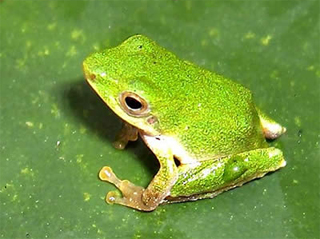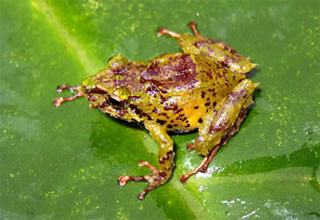Good news for amphibians: three new species and one “extinct” frog discovered
Good news for amphibians: three new species and one “extinct” frog discovered
Jeremy Hance, mongabay.com
October 1, 2008
|
|
Amphibians have received a lot of bleak news recently. Last week a report from the Zoological Society of London and EDGE stated that 50 percent of Europe’s amphibians will go extinct by 2050 unless more is done for their conservation. Meanwhile a report published in August found that one in three amphibians worldwide are threatened with extinction, while 200 species have already been lost since the 1980s. Therefore the discovery of three new frog species and the rediscovery of one thought to be extinct provide a little respite from such bad tidings.
The new species were discovered by herpetologists in the Upper Pastaza Watershed in Ecuador. The region is currently home to two reserves—the Rio Zunac and Rio Anzu reserves—with a third proposed, Cerro Candeliara. The scientists, from the Ecuadorian Museum of Natural Sciences, believe that Cerro Candelaria alone contains up to forty species of frogs.
|
|
The EcoMinga Foundation, an Ecuadorian conservation organization, has partnered with the World Land Trust to monitor and preserve the Upper Pastaza Region. The region has already become famous to botanists due to the discovery of 28 orchids and 190 plant species that are be found no-where else. Other inhabitants include the endangered mountain tapir (often called the woolly tapir), the red-brocket deer, and the spectacled bear.
Near the Rio Zunac reserve the herpetologists found the “extinct” species of harlequin frog (Atelopus palmatus). Not recorded since 1937 this vibrant frog was thought to have succumbed to habitat and disease long ago.
The World Land Trust and the EcoMinga Foundation have also begun a reforestation project in the area, planting over one-thousand trees on deserted pasture-land.
For photo of the reserves: www.ecominga.net

